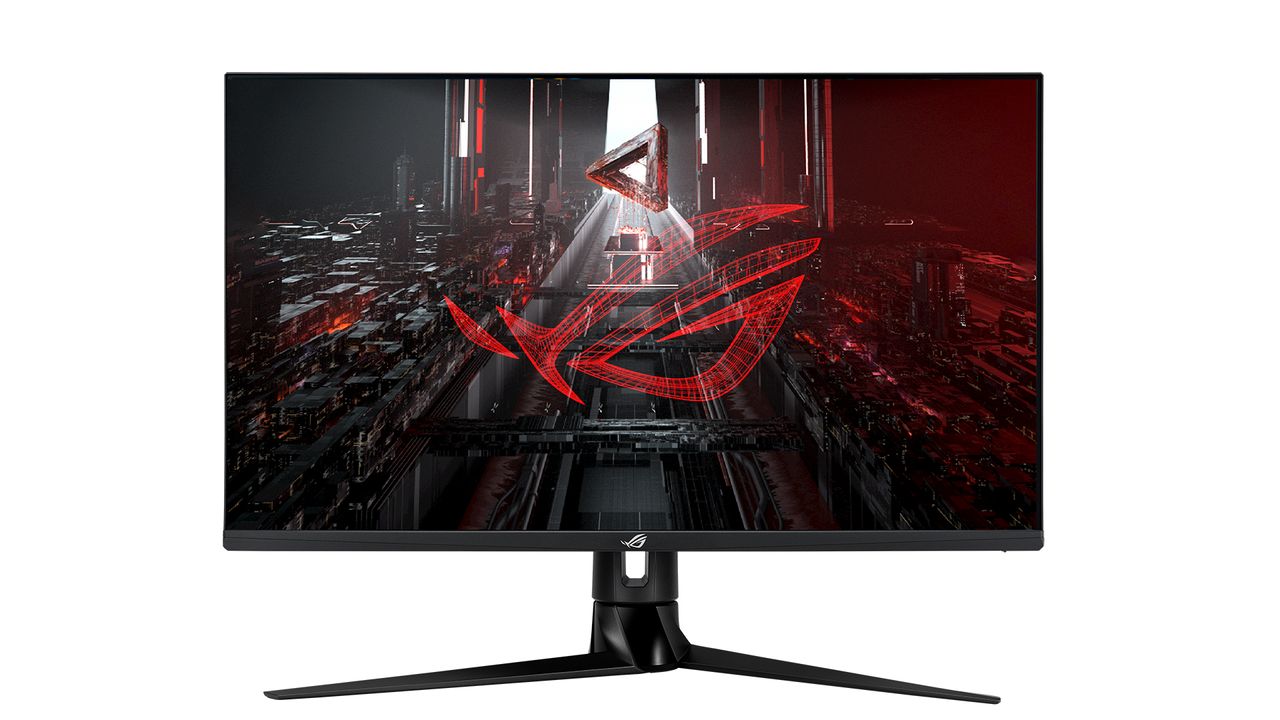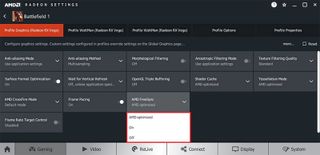TechGamingGaming AccessoriesWhat is AMD Freesync and does it increase FPS for games? AMD’s refresh rate sync tech explainedAMD’s tech synchs frame rates between GPU and display to avoid motion tearingWhen you purchase through links on our site, we may earn an affiliate commission.Here’s how it works.
TechGamingGaming AccessoriesWhat is AMD Freesync and does it increase FPS for games? AMD’s refresh rate sync tech explainedAMD’s tech synchs frame rates between GPU and display to avoid motion tearingWhen you purchase through links on our site, we may earn an affiliate commission.Here’s how it works.
AMD’s tech synchs frame rates between GPU and display to avoid motion tearing
When you purchase through links on our site, we may earn an affiliate commission.Here’s how it works.
(Image credit: Asus)

(Image credit: Asus)
So what exactly is AMD Freesync? It’s a way to dynamically sync your display’s refresh rate to your GPU’s rendering frame-rate, ensuring you don’t get any nasty motion tearing in the visuals, keeping an in-sync and therefore smooth on-screen experience for the duration. It’s easy to use and can make a world of difference.
Typically monitors run at 60Hz, i.e. 60 frames per second, but there’s loads of higher-spec options on the market now that’ll deliver 120Hz, 144Hz, 240Hz, 300Hz and beyond. You’ll need beefy gear to match frame-rates at the upper end of that, of course, but it’s not beyond possible.
So why does motion tearing happen and how does Freesync avoid it? Tearing is the result of a GPU rendering frames beyond what a monitor can output, so you might get an injection of an incorrect frame giving a skewed image for a moment, especially if you move the camera at speed in a 3D world. In reverse to that, if a GPU can’t render at a monitor’s refresh rate then that’s an equal opposite problem with the same effect: which is why Freesync can help the two devices handshake to render at a dynamically adapting rate as necessary.
What’s Freesync compatible with?
This is an AMD technology so originally Freesync was only compatible with AMD products. That changed some years back, however, so you can now benefit from the tech even if you’re an Nvidia user (which also offers its own similar tech, called G-Sync).
If you don’t have a high-powered GPU, such as a Radeon or RTX, then Freesync will also work with an integrated APU, such as the company’s Ryzen chipsets.
But it’s not just a deal on the graphics processor side. You’ll also need a compatible monitor or TV that supports Adaptive-Sync. This began life in 2015, so check that your monitor is new enough and has Adaptive-Sync as part of its spec.
Sign up to the T3 newsletter for smarter living straight to your inbox
Get all the latest news, reviews, deals and buying guides on gorgeous tech, home and active products from the T3 experts
If so, you’re good to go, the two will handshake and you’ll get the two-way comms needed for Freesync to function. Connect via DisplayPort 1.2a or HDMI 2.1 and you’ll getvariable refresh rate (VRR) support.
How do I enable Freesync?
(Image credit: AMD)

(Image credit: AMD)
Once your laptop or PC is linked up to a FreeSync capable display, ensure you’ve got the latest AMD drivers downloaded (here’s the official website). The auto-select tool will sort everything out for you nice and easily and that’s all you need to do – install, restart, and you’re ready to go.
Now you’ll need to open AMD Settings: simply right-click on your desktop, select this from the menu, then select Display, and pick the Radeon FreeSync setting. Job done, you’re all synced up.
What about Freesync Premium and Premium Pro?
What’s that, there are other versions of AMD Freesync? Yes: Freesync Premium and Freesync Premium Pro. They all handle the same base principle of matching frame rates dynamically between GPU and display. But the other versions add some extras too.
Freesync Premium adds 120Hz refresh rates at Full HD and adds low framerate compensation (LFC), to aid frame-rate stabilisation as needed.
Freesync Premium Pro steps things up further, offering low-latency support for HDR (high dynamic range) and HDR optimisation for compatible displays. Useful forgames compatible with Proif you have one of thebest gaming monitorsgoing. There aren’t a mass of compatible games, but there are plenty of bit-hitters in the official list on the AMD website.
You’ll need compatible displays and games to make the most of these Premium and Pro features, of course, so keep an eye on the labels and lists to get the best of the best.
Today’s best Asus ROG Swift PG43UQ dealsNo price informationCheck AmazonWe check over 250 million products every day for the best prices
Today’s best Asus ROG Swift PG43UQ dealsNo price informationCheck AmazonWe check over 250 million products every day for the best prices
Today’s best Asus ROG Swift PG43UQ deals
No price informationCheck Amazon
No price informationCheck Amazon
No price informationCheck Amazon

No price informationCheck Amazon
No price information
No price information
We check over 250 million products every day for the best prices
We check over 250 million products every day for the best prices

Amy Schumer’s Netflix comedy will leave your jaw on the floorOne big taboo gets busted in Kinda Pregnant
One big taboo gets busted in Kinda Pregnant

10 minutes, two dumbbells and this standing workout for more sculpted armsTone your arm the fun way with this no-repeat workout
Tone your arm the fun way with this no-repeat workout
